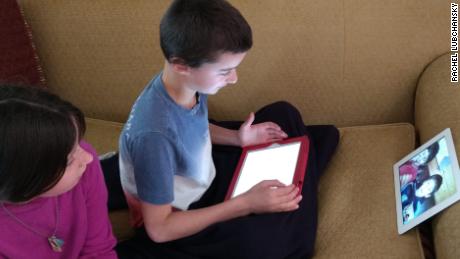published in the journal Preventive Medicine.
Both factors were associated with higher levels of life satisfaction and optimism and lower levels of anxiety and depression, the study said. Longer screen time was particularly harmful for girls, as researchers saw a “significantly more pronounced” association between more screen time and worse mental health, the study said.
But it’s not healthy for either gender: Screen time that went beyond the recommended limit of two hours was still significantly associated with lower satisfaction and optimism among boys and girls, the study said.
a news release.
Oberle also noted that due to the pandemic, finding extracurricular activities isn’t as easy as it once was. Still, finding something safe for teens to do is important, she said.
“Our findings highlight extracurricular activities as an asset for teens’ mental wellbeing,” she said. “Finding safe ways for children and teens to continue to participate in these activities during current times may be a way to reduce screen time and promote mental health and wellbeing.”
Teens collectively spending more time on screens
The study used self-reported data from more than 28,000 seventh grade students between 2014 and 2018 — drawing from 27 school districts in British Columbia.
The students answered questions about their usage of screen time after school, including how much time they spent watching TV, Netflix, YouTube, streaming videos or something else, and how much time they spent playing video or computer games.
Then, students reported how many days they had participated in extracurricular activities such as sports, music or arts programs.
To gauge mental health, researchers asked students to rate indicators such as “I start most days thinking that I will have a good day” on a scale of “disagree” to “agree a lot.”
Some of the results were expected, researchers said in the study. Students with no extracurricular activities tended to have high levels of screen time, for example. And they expected girls would score higher on negative mental health indicators, as previous research has found that they tend to have higher levels of depressive symptoms and anxiety compared to boys.
What was noteworthy, researchers say, is that even among students who participated in extracurricular activities, 46% still exceeded the recommended screen time of two hours, a limit set by the Canadian Pediatric Society. At the same time, 67% of students who didn’t participate in extracurricular activities also exceeded two hours of screen time. Together, this indicates high screen time among teenagers generally.
“This is consistent with research that has shown increases of recreational screen use in adolescents over the past decade, indicating that screen time is a current zeitgeist of adolescents’ recreational time-use,” the study reports.
Extracurricular activities remain key for better mental health
However, extracurricular activities were still significantly related to higher levels of optimism and life satisfaction — a trend that appeared across genders and independent of screen time, the study said.
“This finding confirmed our hypothesis and aligns with previous research and emphasizes that extracurricular activities are an asset for thriving in adolescence,” the study said. “While past studies have highlighted the importance of extracurricular activities for social, emotional and academic development, the present study emphasizes their importance for positive mental health outcomes.”
studies have shown broader trends of elevated depression, anxiety and post-traumatic stress disorder.



